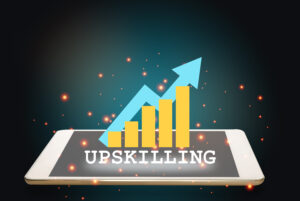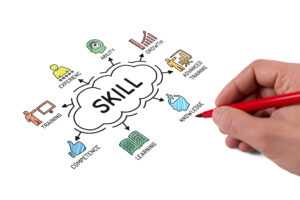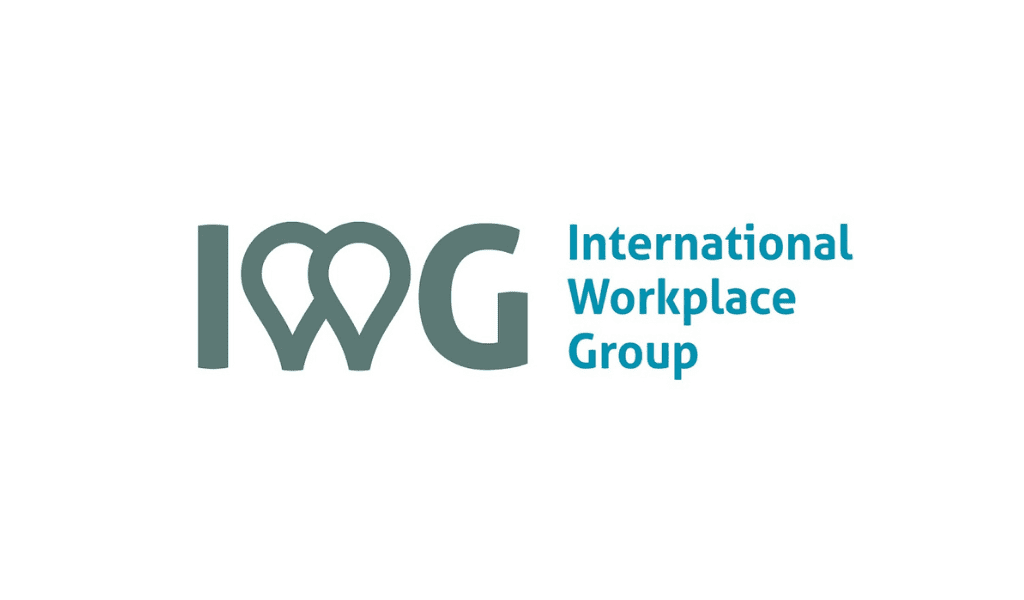HR leaders predict how technological advancements, investments in employee engagement, and cultural shifts will transform the way people work in the coming year.
By Maggie Mancini
As nearly every facet of the workforce has been transformed over the last four years, HR leaders have been caught in a stream of constant change, emphasizing future planning and strategy, focusing on the importance of retention, and investing in workplace well-being. With so much continued uncertainty, the future of work is a central concern for employees and employers alike.
As 2023 ends and organizations prepare for the new year, HR leaders can expect even more change as companies grapple with an ever-evolving workforce and industry. Here are five trends seven experts are predicting in 2024.
TREND ONE: There will be an enhanced focus on AI in HR business operations, recruiting, and retention efforts. When ChatGPT went public in late 2022, the reaction from people both inside and outside of the industry was explosive. Now, as companies prepare to draft and implement their own policies surrounding generative AI, automation technology will play a more crucial role in HR business operations, recruiting, and retention.
“Generative AI is set to revolutionize how HR leaders approach talent and retention more than anything that came before it,” says Sarah Tilley, senior vice president of global talent acquisition and development at ServiceNow. “Smart HR leaders are leaning into the disruption to ensure it is being used to help drive progress on the things needed most for employees and businesses.”
Tilley explains that this technology will have a transformative impact on internal mobility and employee retention. By recommending relevant training, mentors, and mobility opportunities based on the skills employees need, generative AI can help ensure that career advancement is more about what the employee knows, rather than who they know.
When using AI to approach recruiting, generative AI will transform the front-end of the hiring process, Tilley says. Writing job descriptions, reviewing resumes, sourcing, and other recruitment strategies are likely to become more automated.
Organizations also must work to ease employee concern that their roles will be replaced by advanced AI. With research showing that about one in five workers have jobs with key tasks that may be assisted or replaced by AI technology, according to a recent report from Pew Research Center, it’s no wonder workers are worried.
“There was a study that found more than half of all employees are very concerned that they’re going to be put out of work or they’ll be demoted,” says Walter Sabrin, chief talent officer at Vensure Employer Solutions. “Many workers are concerned that they will be worse off than yesterday when their company adopts AI. The number one thing that a company needs to do is communicate.”
Companies should ask themselves how they plan to use AI technology to improve their company and communicate to employees how the technology will help improve their daily lives, Sabrin says. Jobs like customer service and data entry, for example, may be vulnerable to the technology, so additional training and upskilling initiatives may be necessary.
While some of the earliest adoptions of AI have been criticized for perpetuating bias, Teri Ellison, CHRO for SHL, says the technology now has the ability to help with neurodiversity. “As a dyslexic leader, what AI does for me is actually offers me a platform to enable me to communicate. It also helps me think about the wording that I use,” she explains. “So, I think AI will help bring different diversity into organizations from a talent attraction perspective and a talent acquisition perspective.”
As more companies embrace AI, the technology is reshaping the approach to internal development by providing data to better align employees with internal career advancement prospects, says Laura Selig, chief people officer at Model N.
As the World Economic Forum estimates a need of nearly 101 million workers with skills in artificial intelligence, data analysis, and machine learning by 2025, millions of employees may need to be retrained and upskilled to remain competitive in the job market. Providing this data to employees can empower them to understand and pursue the competencies required to move their careers forward, Selig says.
“AI is well on its way to becoming an indispensable tool for HR professionals, expediting talent mobility and fostering a stronger sense of inclusivity and belonging within an organization’s talent management strategy,” Selig says. “AI implementation represents a valuable ally, not a substitute, for human judgement and decision-making. Strategically leveraging AI empowers leaders to refocus on their most critical asset, which is their people.”
As the World Economic Forum estimates a need of nearly 101 million workers with skills in artificial intelligence, data analysis, and machine learning by 2025, millions of employees may need to be retrained and upskilled to remain competitive in the job market.
TREND TWO: Companies will emphasize face-to-face collaboration, even among remote employees. Though the COVID-19 pandemic changed the structure of the workforce overnight, organizations are looking to the future, with large companies like Apple, Google, IBM, and Disney among those pushing return-to-office mandates and an end to fully remote work in 2023 and beyond. For the C-suite, this call for in-office work has been focused on improving company culture, providing space for employees to have meaningful time together, and boosting productivity.
There has been some pushback, with many companies opting for a hybrid working model to support in-person collaboration and teamwork while also providing the flexibility that workers have become accustomed to over nearly four years.
The trend of hybrid work is likely to stick, says Amy Cappellanti-Wolf, former chief human resources officer at Cohesity and member of the HR advisory council at Betterworks. As 2023 has shown, employee flexibility is critical for attracting and retaining top talent. Josh Bersin, global industry analyst and CEO of The Josh Bersin Company agrees, “Every study we’ve done has shown that people who have the flexibility to work at home one to three days a week are far more satisfied with their jobs than those who have to go five days a week. To help people stay healthy in every way, I see 2024 having an even greater focus on flexible work.”
To balance employee desires with company needs, Cappellanti-Wolf recommends several strategies organizations can leverage to provide flexibility to employees while also encouraging in-office work.
- Flexible scheduling can allow employees to choose when they work from home and when they come to the office.
- Companies can offer developmental learning programs, host meetups, organize office social events, and select collaboration days to draw workers back into the office.
- Clear communication about expectations, coupled with creating a collaborative office environment, will motivate employees to return.
- Offering technology solutions that enhance remote collaboration and reinforce inclusivity can make the transition smoother.
TREND THREE: Employee engagement and the employee experience will remain critical as the talent market stays very competitive. A recent survey from edX Enterprise finds that more than three-quarters of employees are more likely to stay with a company that invests in ongoing learning, skills development, and career growth. And as the talent market remains tight, ensuring that employees are engaged is especially important.
“A culture of continuous learning supports a positive and fulfilling employee experience, a growth mindset, and ongoing engagement,” says Selig. “Providing opportunities for professional development demonstrates a company’s commitment to its employees and their success, which makes employees feel connected.”
Selig says that employee resource groups foster this engagement and establish a supportive space where people can be their authentic selves. Employees can connect with colleagues who share familiar backgrounds and goals and create opportunities for open dialogue. This can also be helpful for fully remote workforces. Listening to employees and creating formal and informal opportunities for workers to provide feedback is imperative to fostering engagement and can help inform future initiatives.
More than three-quarters of employees are more likely to stay with a company that invests in ongoing learning, skills development, and career growth.
Mental health support and wellness initiatives are also important when investing in employee engagement and improving the employee experience. It can help boost recruitment and retention efforts, as employees increasingly search for workplaces that prioritize their well-being.
“Companies that invest in comprehensive wellness programs, mental health resources, and a supportive work environment will not only attract top talent but also create a sense of belonging so people can bring their best selves to work,” says Cappellanti-Wolf.
Quiet quitting has become a major buzzword among business leaders over the last two years, with HR professionals concerned about how to ensure that employees are engaged. But quiet quitting—or disengagement—is certainly not a new phenomenon.
“I think of it as the opposite of the ownership mentality,” says Bryan Otte, chief human resources officer at MGAC. “How do we imbue that sense of connection to the greater good? It’s critical that every employee understands how their work fits into the larger picture, but I don’t think we can assume that they always do. People want to be a part of a team. We must make sure that managers are clear on how all the pieces of the puzzle fit together. We do everyone a favor with this kind of feedback and these changes, and there are few things worse than spending a big chunk of your day uninspired.”
TREND FOUR: Organizations will emphasize data-driven decision-making when it comes to HR and people processes. From email to badge readers to digital traffic, about every aspect of work involves some form of data. Companies can utilize data to predict turnover, address skills gaps, assess employee engagement, and diagnose problems that arise, explains Bersin. This means that most companies have data analytics teams that predict, understand, and improve the way their organization operates.
“One company we work with, for example, had just analyzed their battery manufacturing process and found, through data, that they had over-hired and could improve output by changing schedules, not hiring more people,” Bersin says.
Data gives HR leaders better visibility across the business and workforce, enabling them to better navigate the talent landscape, recognize what employees are interested in, and discern career advancement opportunities.
“In talent acquisition, the assumption is often that we are moving resumes around, but there is a genuine strategy for how to uncover, attract, assess, and hire to bring in the best talent for specific roles,” says Tilley. “That is where data comes into play. We must hold ourselves to hard metrics, programs, and strategies to really move the needle and meet employee expectations.”
An organization striving to optimize its talent development initiatives may use data to analyze the effectiveness of existing programs says Tilley. This data can help identify skills gaps or uncover utilization problems where available training tools aren’t being maximized. After gathering insights, HR professionals can adopt a targeted approach to bridge skills gaps and maximize the impact of talent development efforts while influencing how leaders shape and invest in a company’s learning and development strategy.
TREND FIVE: Companies will invest in upskilling and reskilling to support continuous learning, retention, and changes shaped by AI. Lack of employee skills is the top challenge preventing enterprise innovation, with 88% of those surveyed saying that it’s holding their organization back, according to NTT DATA’s 2023 Innovation Index. Nearly half (43%) say that a lack of employees with needed data analysis skills is their biggest challenge when using their data. However, many organizations are not investing enough to build up the skills of their workforce, with only 44% reskilling existing resources and 33% recruiting new employees.
“The likelihood of organizations investing in reskilling and upskilling for existing employees is high,” says Cappellanti-Wolf. “The rapid pace of technological advancements requires new skills for employees, more thoughtful and purposeful workforce planning, and ensuring there is a change management plan to help employees and managers navigate the new world of work.”
Lack of employee skills is the top challenge preventing enterprise innovation, with 88% of those surveyed saying that it’s holding their organization back.
As more companies embrace AI technology, shift their working models in the post-pandemic era, and adjust to a renewed focus on workplace well-being in 2024, upskilling initiatives and other opportunities for continuous learning are paramount.
Cappellanti-Wolf adds that investing in training programs, mentorship initiatives, and continuous learning opportunities will not only enhance employee capabilities but also contribute to overall organizational resilience and competitiveness.

















